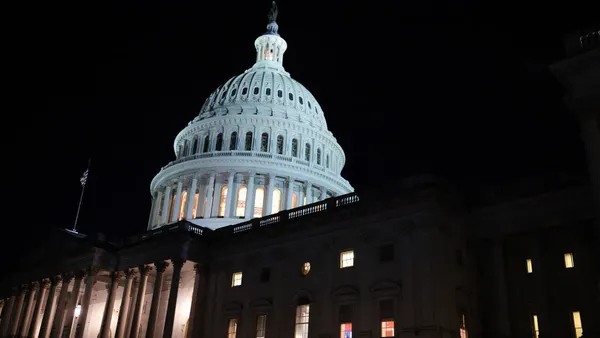Dive Brief:
- While nearly every state has some form of college and career readiness criteria for high school students, there are still areas for growth in how data on students' postsecondary readiness is collected, according to a July report from All4Ed and the Urban Institute.
- Though criteria vary depending on each state’s priorities and goals, 42 states currently use at least one college and career readiness indicator in their school accountability systems.
- Accountability systems include both indicators and measures. The report defines indicators as offering information on a critical aspect of school performance, while measures are the data points used within an indicator to determine whether particular student inputs or outcomes were achieved.
Dive Insight:
“Forty-two states are using a college and career readiness indicator, that's great progress,” said Anne Hyslop, All4Ed’s director of policy development and the report’s author. “All of these measures have been developed in the last decade or so.”
The report found that 39 of the 42 states with indicators include both college and career readiness measures, and 20 of these states also measure military or civic readiness.
Advanced Placement or International Baccalaureate courses and exams are the most common measures of college readiness, used by 35 states. They are followed by dual or concurrent enrollment coursework (34 states) and college admission test scores, such as the SAT and ACT (26 states).
For career readiness assessment, earning industry-recognized credentials or completing a career and technical education pathway are the most common measures. Some states also use work-based learning or internships.
Hyslop noted that not all states have a clear distinction between indicators for college, career and military readiness. Some states combine several measures into a single indicator, while others group different sets of measures into multiple indicators.
“This is where getting better transparency and data would be really helpful,” Hyslop said. “A lot of states may report readiness across all of the measures, but they don't report how many students are ready for college, how many are ready for career, etc. They don't report it separately.”
The report highlighted North Dakota as a good example of this distinction. The state’s indicator, Choice Ready, has a list of essential skills required of all students that align with the state’s graduation requirements. Once students have demonstrated these essential skills, they need to show readiness in two of three areas: postsecondary ready, workforce ready or military ready.
For Hyslop, improving data collection is the “lowest-hanging fruit.”
“There is so much data that is being collected on student readiness, but the way that it is reported is not necessarily leading to the maximum value from that data, because it's not always fully disaggregated by student subgroups,” said Hyslop. “It's just a matter of packaging it in more useful formats.”
The outlier states that do not currently have a college and career readiness indicator are Alaska, Kansas, Maine, Minnesota, Nebraska, New Jersey, Oregon and Wisconsin, according to the report. Illinois is currently in the final stages of developing its indicator.






 Dive Awards
Dive Awards







